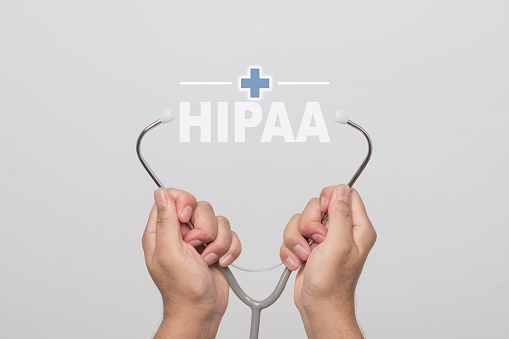How Technology is Making HIPAA Compliance Easier

Securing digital information is a major part of ensuring that a patient’s information is kept private and protected. There is a great deal of technology available that can help physicians better maintain their HIPAA compliance with their practices.
The key to easier HIPAA compliance is careful monitoring and consistent upgrades. All software must be updated on a regular basis and should be monitored for potential breaches. All it takes is one time for a cybercriminal to get a hold of private patient information and you could find yourself facing serious penalties. You can avoid those penalties by employing and maintaining technology geared toward protecting patient information.
Secure Texting
Secure texting allows physicians to transmit encrypted patient information, thus taking advantage of the speed and convenience of text messaging without potentially exposing that information to hackers. It is in the form of an app that is downloaded onto a smartphone, mobile device, EHR, or desktop computer by an authorized user. It works on all operating systems, allowing for a seamless connection. The app supports image sharing as well as videos and documents. It connects users who have been authorized to access the system.
Cloud Encryption
Cloud storage providers offer encryption as a service to protect sensitive data that is stored on a storage cloud. This data can be text, videos, images, or any other material that is digitally generated, stored, or transmitted. The data is encrypted, using a special algorithm, then placed on the storage cloud. Potential hackers and cybercriminals will not have access to the information because it will not appear in any understandable format. Encryption of a database is expensive, but it is necessary for doctors to remain HIPAA compliant.
Audit Logging Software
An audit log, also known as an audit trail, is a security-relevant set of records or chronological record that details or documents an activity sequence that occurred for a specific procedure, operation, or event. In the medical office, it is generated as a result of activities relating to health care data transactions. It can also be created in response to communications by systems, accounts, or individuals. It provides an evidentiary chain of activities relating to all the transmission activities regarding data on your system. If there is ever a breach, you can consult this audit log to get important information regarding where things went wrong and areas that you need to tighten security.
Intrusion Detection Software
Just as the name implies, an intrusion detection system, or IDS, is an application that can be either software or a device used to monitor systems or a network for suspicious or malicious activity as well as violations of policy or regulations. It can help guard your system from hackers and other attacks designed to breach your protected data. This is a valuable tool in your HIPAA technology arsenal. The key to making this technology work, though, is training your staff to recognize suspicious activity and respond appropriately to alerts that the system issues. Even if you don’t have any information stored on a cloud, as long as your network is connected to the internet it is still at risk and you need this software.
Technology is making substantial advances. Every day, it seems, a new technology surfaces that promises convenience, better security, and faster transmission. Before you commit to a particular system or application, have it reviewed by a network security specialist to ensure that what you are getting is the best thing for your network and your staff. It is better to take the time before you invest in network security measures because then you can make sure you get it right.


